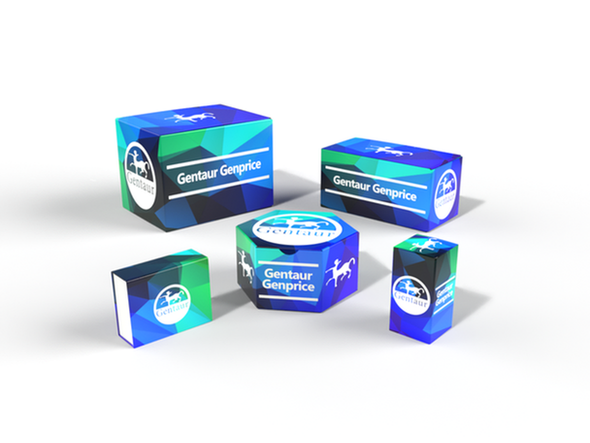Description
Bif Antibody | 3817 | Gentaur UK, US & Europe Distribution
Host: Rabbit
Reactivity: Human, Mouse
Homology: Predicted species reactivity based on immunogen sequence: Rat: (100%) , Chicken: (100%) , Bovine: (93%)
Immunogen: BIF antibody was raised against a 15 amino acid synthetic peptide from near the carboxy terminus of human BIF.
The immunogen is located within the last 50 amino acids of Bif.
Research Area: Apoptosis, Innate Immunity
Tested Application: E, WB, ICC
Application: BIF antibody can be used for the detection of BIF by Western blot at 1 - 2 μg/mL. Antibody can also be used for immunocytochemistry starting at 10 μg/mL.
Antibody validated: Western Blot in human samples and Immunocytochemistry in human samples. All other applications and species not yet tested.
Specificiy: N/A
Positive Control 1: Cat. No. 1201 - HeLa Cell Lysate
Positive Control 2: Cat. No. 17-001 - HeLa Cell Slide
Positive Control 3: N/A
Positive Control 4: N/A
Positive Control 5: N/A
Positive Control 6: N/A
Molecular Weight: N/A
Validation: N/A
Isoform: N/A
Purification: Bif Antibody is affinity chromatography purified via peptide column.
Clonality: Polyclonal
Clone: N/A
Isotype: IgG
Conjugate: Unconjugated
Physical State: Liquid
Buffer: Bif Antibody is supplied in PBS containing 0.02% sodium azide.
Concentration: 1 mg/mL
Storage Condition: Bif antibody can be stored at 4˚C for three months and -20˚C, stable for up to one year. As with all antibodies care should be taken to avoid repeated freeze thaw cycles. Antibodies should not be exposed to prolonged high temperatures.
Alternate Name: Bif Antibody: Bif-1, CGI-61, PPP1R70, dJ612B15.2, KIAA0491, Endophilin-B1, Bax-interacting factor 1, Bif-1
User Note: Optimal dilutions for each application to be determined by the researcher.
BACKGROUND: Bif Antibody: Apoptosis plays a major role in normal organism development, tissue homeostasis, and removal of damaged cells and is caused by the activation of proteolytic enzymes termed caspases. Proteins that comprise the Bcl-2 family such as Bax appear to control the activation of these enzymes. Bax activity was found to be regulated by its association with Bax-interacting factor 1 (BIF) , a member of the endophilin B family that is associated with intracellular membranes. Following this interaction, Bax undergoes a conformational change and translocates to mitochondrial membranes. The Bax/BIF interaction appears to be enhanced by apoptotic stimuli, suggesting that BIF acts as the trigger to activate Bax, and as suppression of BIF promoted HeLa cell colony formation in soft agar, it may have a role in the suppression of cancer progression. At least two isoforms of BIF are known to exist.










